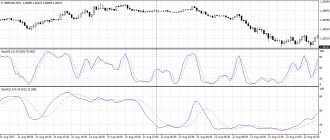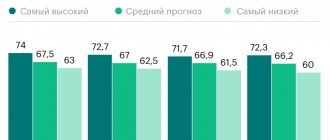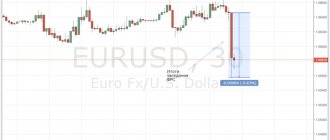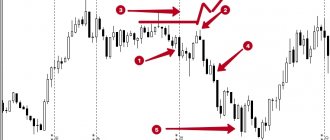More than 40 million Americans have filed for unemployment benefits over the past 10 weeks, a level of unemployment in the United States not seen since the Great Depression.
The economic fallout from Covid-19 has spread far and wide, hitting virtually every sector of the economy and leaving tens of millions of people without wages or the ability to pay bills.
Here are the key figures that reveal the scale of unemployment, as well as the devastating economic consequences of the current crisis.
National unemployment rate: 14.7%.
The US Department of Labor publishes the national unemployment rate at the beginning of each month. In April data, which was released earlier in May, the figure was 14.7%, down from 4.4% in March.
While many states have already begun the gradual process of easing lockdowns and reopening businesses, this figure only reflects claims that were not filed until mid-April.
Since then, several million more people have applied for benefits, but we won't know what impact this has had on the unemployment rate until data for May is released in early June.
Comparison of unemployment in Russia and the USA
Traditionally, Russia has recorded a small number of unemployed people. The working population prefers not to join the employment exchange, but to look for work on their own.
The surge in applications occurred in May 2021, when the figure was 6.1%. The increase is attributed to a temporary increase in benefits. In normal times, there are minimum payments and bureaucratic difficulties in registering. This is what keeps Russian citizens from applying to the employment service.
If we compare the numbers, then in 2021 and 2021 the average indicators are approximately at the same level: in Russia 4.9%, in the USA 3.8%.
In the USA and Russia there is such a thing as a professional unemployed - this is a person who lives off benefits from the state, he is not going to look for work.
The crisis year 2021 was marked by a sharp surge, but only in the Russian Federation the figure reached 6.1%, and in America – up to 14.8%. The situation in both countries has so far stabilized.
Black and Hispanic unemployment rates: 16.7% and 18.9%.
Economists have long known that African Americans and Latinos are the most vulnerable groups during economic downturns, and while many hold essential jobs, the Covid-19 economic crisis is no exception.
Even at its lowest levels, the black unemployment rate is typically twice that of whites and somewhat higher than that of Hispanics.
Experts say segregation keeps black and Hispanic workers in low-wage industries such as hospitality. They receive virtually no compensation and have suffered the most from the crisis.
Other statistics
It is impossible to estimate total employment for 2021 without taking into account other economic indicators. Both women and men retire at the same age - 66 years. At the same time, the percentage of people working after 66 is extremely small. Pensioners prefer to spend time traveling and family care.
The unemployment rate among young people is high - about 8.5%. Despite the increased number of jobs, young people still find it difficult to find a place. Most students and beginning professionals are forced to work half-time, although they expressed a desire to work all day. Work on this indicator is planned in the future.
Share of women among unemployed Americans: 55%.
Although women make up a smaller percentage of the working population, they have been laid off at slightly higher rates over the past few months.
In early May, the Labor Department reported that about 11.5 million women had lost their jobs, compared with about 11 million men .
This is no coincidence, given that the industries hit hardest by the shutdown—hotels and tourism, education and healthcare—employ more women than other industries.
Comparison with other countries
Every country provides assistance to people left without work. The differences lie in the criteria for obtaining it:
- Germany. There are various social programs. The support is 60-80% of the former income, if there is continuous service - 1 year, and the dismissal occurred at the initiative of the employer. Paid over 1.5 years. They provide assistance for poverty, but do not provide it to emigrants.
- England. There are two types of benefits: the first is paid for 0.5 years, when calculating the second, the entire family income is taken into account. They provide assistance to pay for housing, and you can get a tax credit for children’s education. Charitable organizations help the homeless.
- Canada. Assistance from the state is provided depending on the amount of annual income and the available number of hours of work per week. The average is $600-1,500. Subject to income tax. For comparison, you can rent a room for $500 in Toronto.
- Spain. Amount of assistance: 60-80% of salary, and the accrual period depends on length of service - maximum 2 years. Then they can provide a poverty benefit “rent cativa”.
- Russia. The size and period of allocation depend on the age of the applicant, existing experience and salary in the last place. Accrual amount: minimum - 1,500 rubles, and maximum - 11,260 (for pre-retirees) and 8,000 for other categories.
Thus, all countries provide assistance to citizens who have lost their jobs. To obtain it, certain conditions must be met and the required documents must be provided. It is necessary to actively search for vacancies. The payment period varies everywhere, but no more than two years. Some countries still provide assistance to poor people.
Support for the unemployed changes with a change of government, but money is not paid anywhere for nothing. Emigrants are most often not paid this benefit. They must earn their own living. Social policy in the United States is no better than in other countries, and in some places it is even worse.
Average unemployment insurance compensation: about $980.
Before the pandemic, the average unemployment compensation was about $380.
But since each state has its own social insurance system and sets the amount of unemployment compensation, this amount varies widely.
Some states reimburse about a fifth of the salary, while others reimburse half or more.
To help smooth out those differences, those who successfully apply for benefits will receive an extra $600 a week through the end of July, thanks to the stimulus package passed by the US Congress in March.
While this means some still struggle to make ends meet, others end up making more than they did in the jobs they were fired from.
At auctions in Europe, major currencies are adjusted ahead of the release of the US labor market report for December. The pound/dollar rate dropped to 1.2358, the euro/dollar is consolidating at 1.580.
For reference to novice traders:
Non-farm Payrolls (NFP) is a report that shows how many new jobs were created in the US non-farm sector in a month. Payrolls are a payroll according to which salaries are issued to employees. The US employment market report is published on the first Friday of each month at 16:30 (gmt+3).
NFP has a strong influence on the foreign exchange market, so traders are wary of this data. After the publication of the NFP, if the deviations of the actual value from the forecast were significant, the market takes off in a matter of seconds. Working on NFP is risky, so many traders try to close before the report is published and watch the market from the side when the news is released.
The indicator is unpredictable, and the actual value almost always deviates from the forecast by an average of 30-40 thousand. Let us emphasize that we are talking about the average deviation from the forecast value. Deviations can reach 100 thousand. In addition, indicators for the previous two to three months are constantly reviewed.
Market reaction to the November report
On Friday, December 2, a controversial report on the US labor market was released. The number of new jobs in the United States in the non-agricultural sector increased by 178 thousand in November, with a forecast of 175 thousand. The figure for September was revised from 191 to 208 thousand, for October - from 161 to 142 thousand. The overall revision for September and October was - 2 thousand
The labor force participation rate decreased from 62.8 to 62.7%. Unemployment dropped to 4.6% (the forecast was 4.9%, the previous value was 4.9%). The average hourly earnings index in the US for September was -0.1% (the forecast was 0.2%).
The report's indicators were not so good for the dollar's appreciation. Wages and the share of the economically active population have decreased. Due to the latter indicator, unemployment decreased. The number of jobs created coincided with the forecast.
The amplitude of fluctuations in the euro/dollar pair was 55 points. The British currency rose in price by 127 points. Its growth was associated with a decline in the euro/pound cross pair before the constitutional referendum in Italy. On Monday, December 5, the euro fell by 150 points against the dollar.
NFP forecast for December
The US economy is expected to add 178,000 new jobs in November, with unemployment rising from 4.6% to 4.7% and average hourly wages rising from -0.1% to 0.3%.
Previously published macro indicators in the US that have a positive impact on NFP:
The ISM index of business activity in the manufacturing sector in December increased from 53.2 to 54.7 points (+1.5). The employment index rose 0.8 points to 53.1. The ISM services business activity index remained unchanged in December at 57.2. The consumer confidence index in December amounted to 113.7 against the forecast of 109.0 points (the previous value was revised from 107.1 to 109.4 points). The University of Michigan Consumer Expectations Index for November rose from 85.2 to 89.5 points. The University of Michigan Consumer Sentiment Index for November rose from 93.8 to 98.2 points.
Published data that has a negative impact:
The latest ADP report showed that in December the private sector created 153 thousand jobs against the expected 170 thousand. The value for November was revised downward by 1 thousand, to 215 thousand. The ADP index does not have a positive correlation with NFP, so it is not worth focus on it. In December, the employment index in the ISM services index fell by 4.4 points to 57.2.
What fluctuations are possible with different NFP values for the major pairs at 16:30 (GMT+3)?
The NFP indicator has a strong impact on the foreign exchange market. After its publication, rates take off and within a few seconds overcome dozens of points, as a result of which volatility increases. The spread between the Bid and Ask prices widens. You need to be aware of this and not be surprised by the inconsistency, as well as slippages on stop orders at the time of news release. There are such Fridays, when the passwords are released before other important events, and then the reaction to the report is generally weak.
In addition to jobs, other NFP components are important: labor share and wage levels. Their decrease causes the dollar to fall, and their increase causes the dollar to rise. They are important for the Fed when raising rates. The regulator is unlikely to increase the rate before April.
Since at 16:30 (GMT+3) the movement of currencies is influenced by several indicators, the review considers different options:
1. If the NFP indicator coincides with the forecast of 178 thousand, unemployment remains at 4.6% or rises to 4.7%, the average salary rises according to the forecast, then the euro/dollar pair will decrease by about 35-40 points, pound/dollar – by 50 points. With a declining euro/pound cross, the euro/dollar exchange rate will decrease by 70 points and the pound/dollar rate by 35 points.
2. If the NFP indicator turns out to be 30 thousand or more above 178 thousand, and unemployment remains at 4.6% with an upward revision of previous values, then the dollar is expected to strengthen against the euro by 90 points, and against the pound by 95 points.
3. If the NFP indicator turns out to be below 178 thousand by 30-40 thousand with a revision of previous values downwards, then the dollar exchange rate should be expected to fall to the main currencies within 70 points.
The values for price fluctuations are approximate, since the report contains many indicators: unemployment, labor share, revision of wage levels and previous values. The assumptions are based on experience from previous NFPs since 2001.
It is important to remember that the more the actual value deviates from the forecast, the greater the market fluctuations. First, market participants react to the NFP itself, then to the unemployment rate, and only then to the revised values for the last two months.
Number of households experiencing food insecurity: 1 in 5.
An analysis by the Brookings Institution found that one in five U.S. households experienced food insecurity at the end of April.
Food supply centers for the poor faced shortages due to increased demand as millions of families struggled to pay for food.
The analysis showed that the situation is worst in families with children: 2 in 5 families with mothers and children under 12 years of age suffered from food insecurity.
American Employment Index by Occupation
The local labor market needs skilled workers in a wide variety of fields. In the states there is no bias towards any of the professions: any specialist will be able to find a job according to their profile.
Almost all specialties in the USA are in demand. Photo: pixabay.com
The most popular jobs for migrants from Russia, Ukraine and nearby countries are considered to be medical workers and programmers. Anesthesiologists are paid a lot.











